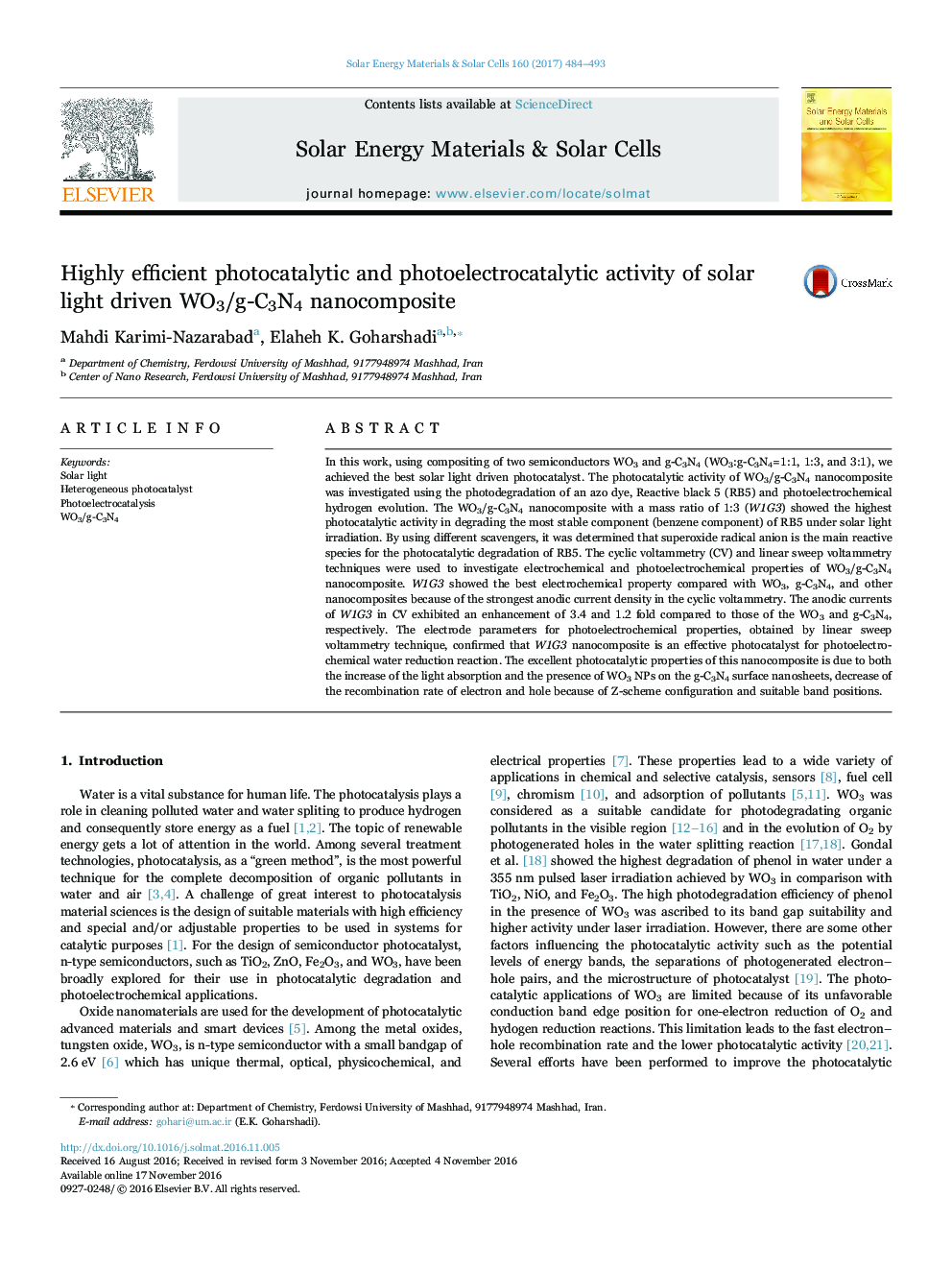| کد مقاله | کد نشریه | سال انتشار | مقاله انگلیسی | نسخه تمام متن |
|---|---|---|---|---|
| 6457403 | 1420663 | 2017 | 10 صفحه PDF | دانلود رایگان |

- Photodegradation of an azo dye under solar light by nanocomposites.
- Solar light driven photocatalyst for photoelectrochemical water reduction reaction.
- Reducing the recombination rate of electron&hole because of Z-scheme configuration.
In this work, using compositing of two semiconductors WO3 and g-C3N4 (WO3:g-C3N4=1:1, 1:3, and 3:1), we achieved the best solar light driven photocatalyst. The photocatalytic activity of WO3/g-C3N4 nanocomposite was investigated using the photodegradation of an azo dye, Reactive black 5 (RB5) and photoelectrochemical hydrogen evolution. The WO3/g-C3N4 nanocomposite with a mass ratio of 1:3 (W1G3) showed the highest photocatalytic activity in degrading the most stable component (benzene component) of RB5 under solar light irradiation. By using different scavengers, it was determined that superoxide radical anion is the main reactive species for the photocatalytic degradation of RB5. The cyclic voltammetry (CV) and linear sweep voltammetry techniques were used to investigate electrochemical and photoelectrochemical properties of WO3/g-C3N4 nanocomposite. W1G3 showed the best electrochemical property compared with WO3, g-C3N4, and other nanocomposites because of the strongest anodic current density in the cyclic voltammetry. The anodic currents of W1G3 in CV exhibited an enhancement of 3.4 and 1.2 fold compared to those of the WO3 and g-C3N4, respectively. The electrode parameters for photoelectrochemical properties, obtained by linear sweep voltammetry technique, confirmed that W1G3 nanocomposite is an effective photocatalyst for photoelectrochemical water reduction reaction. The excellent photocatalytic properties of this nanocomposite is due to both the increase of the light absorption and the presence of WO3 NPs on the g-C3N4 surface nanosheets, decrease of the recombination rate of electron and hole because of Z-scheme configuration and suitable band positions.
222
Journal: Solar Energy Materials and Solar Cells - Volume 160, February 2017, Pages 484-493